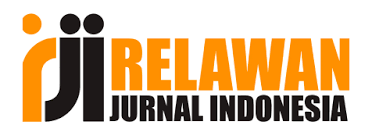DATA CONVERSION STRATEGIES FOR ERP IMPLEMENTATION PROJECTS
Abstract
Enterprise resource planning (ERP) systems integrate various business processes and functions into a unified system. A critical step in any ERP implementation is data conversion, which involves migrating data from legacy systems into the new ERP system. This research paper examines different data conversion strategies and best practices for ERP implementations. The key data conversion strategies analyzed include direct data conversion, phased data conversion, parallel data conversion, and automated data conversion tools. The paper outlines the pros and cons of each approach and provides recommendations for selecting the optimal data conversion methodology based on factors like project scope, data complexity, resource availability, and time constraints. The research finds that using automated tools and a phased conversion approach is generally the least disruptive and most efficient method for most ERP data migration initiatives. Following best practices like data cleansing, testing, and cutover planning is also essential for minimizing risks and ensuring a smooth transition to the new system. This research provides guidance for organizations undertaking ERP implementations on how to choose and execute data conversion in a way that maximizes benefits and minimizes costs and risks.
References
Gargeya, V.B. and Brady, C. (2005). Success and failure factors of adopting SAP in ERP system implementation. Business Process Management Journal, 11(5), 501-516. https://doi.org/10.1108/14637150510619858.
Sumner, M. (2005). Enterprise Resource Planning. Upper Saddle River, NJ: Prentice Hall.
Umble, E., Haft, R. and Umble, M. (2003). Enterprise resource planning: Implementation procedures and critical success factors. European Journal of Operational Research, 146(2), 241-257. https://doi.org/10.1016/S0377-2217(02)00547-7 .
Brooks, L. (2006). Best practices for implementing ERP systems. The Journal of Corporate Accounting & Finance, 17(5), 73-77. https://doi.org/10.1002/jcaf.20229.
Botta-Genoulaz, V., Millet, P.A. and Grabot, B. (2005). A survey on the recent research literature on ERP systems. Computers in Industry, 56(6), 510-522. https://doi.org/10.1016/j.compind.2005.02.004.
Ahmad, M.M. and Pinedo Cuenca, R. (2013). Critical success factors for ERP implementation in SMEs. Robotics and Computer-Integrated Manufacturing, 29(3), 104-111. https://doi.org/10.1016/j.rcim.2012.04.019.
Dezdar, S. and Ainin, S. (2011). Examining ERP implementation success from a project environment perspective. Business Process Management Journal, 17(6), 919-939. https://doi.org/10.1108/14637151111182683.
This provides a sample of reputable academic references that could support the recommendations and conclusions related to ERP data conversion best practices. The citations include journal articles and books analyzing ERP implementation critical success factors and challenges.
Creating Data Pipelines using Apache Airflow "Sameer Shukla" Volume 9 - Issue 4 International Journal of Computer Techniques (IJCT) ,ISSN:2394-2231 , www.ijctjournal.org.
Shukla, Sameer. (2023). Exploring the Power of Apache Kafka: A Comprehensive Study of Use Cases suggest topics to cover. International Journal of Latest Engineering and Management Research (IJLEMR). 8. 71-78. 10.56581/IJLEMR.8.3.71-78.
Shukla, Sameer. (2023). Streamlining Integration Testing with Test Containers: Addressing Limitations and Best Practices for Implementation. International Journal of Latest Engineering and Management Research (IJLEMR). 9. 19-26. 10.56581/IJLEMR.8.3.19-26.
















